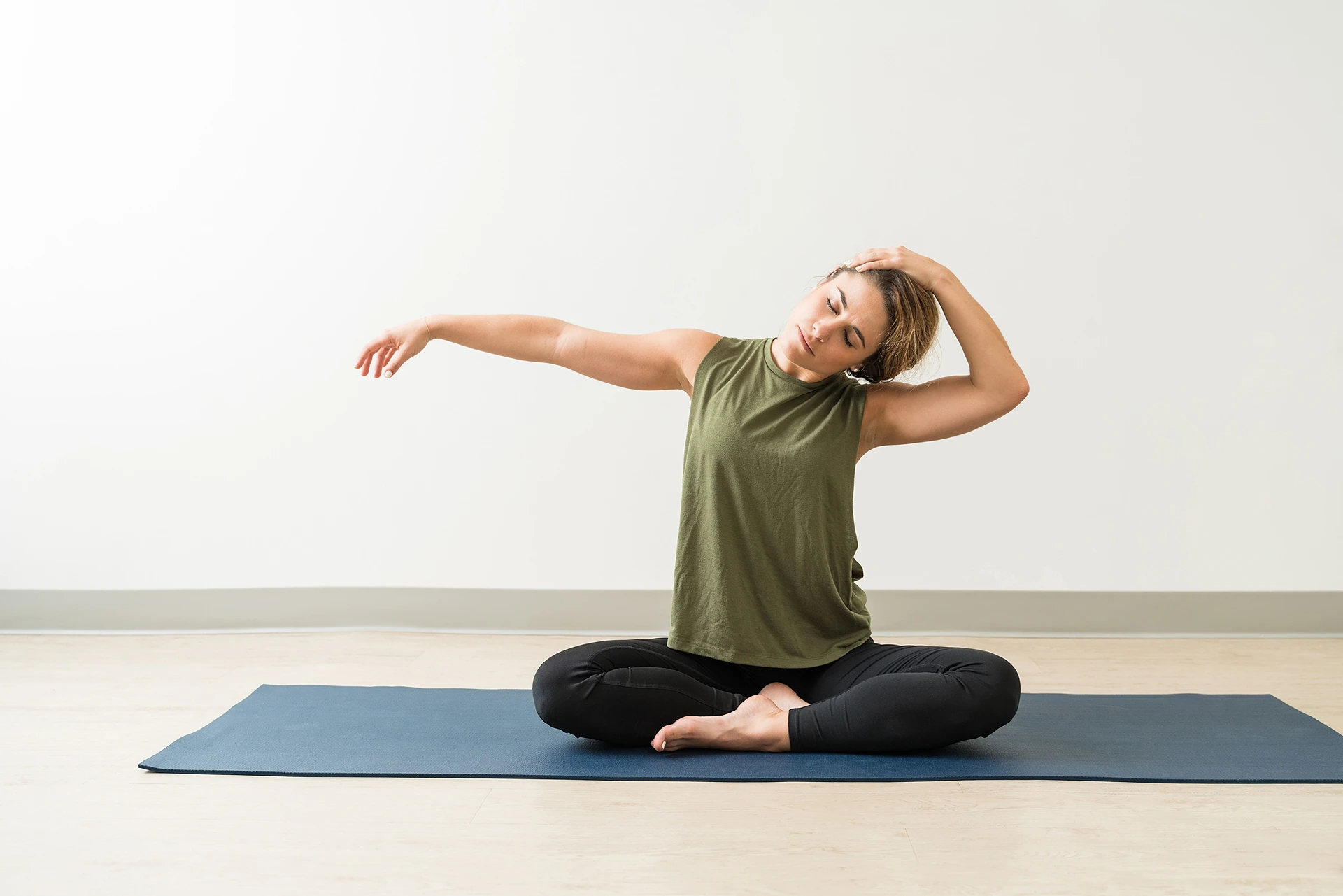Back and Neck Pain Relief: Yoga Exercises to Try Today
If you’re one of the millions of people suffering from chronic back or neck pain, you know how debilitating it can be.
Simple activities like sitting at a desk or looking down at your phone can cause excruciating discomfort. Over-the-counter medications provide only temporary relief. You may feel like you’ve tried everything, but the pain persists.
There is hope.
Regular yoga practice can significantly reduce back and neck pain while improving flexibility and posture. Yoga’s mind-body approach targets the root causes of pain rather than just masking symptoms.
While yoga is not a cure-all, it is an excellent complement to traditional treatments. With time and consistency, you may find your quality of life greatly improved.
Kaly: Bridging the gap between yoga and physical therapy to provide you with holistic solutions for your back and neck pain challenges.
What Causes Back and Neck Pain?
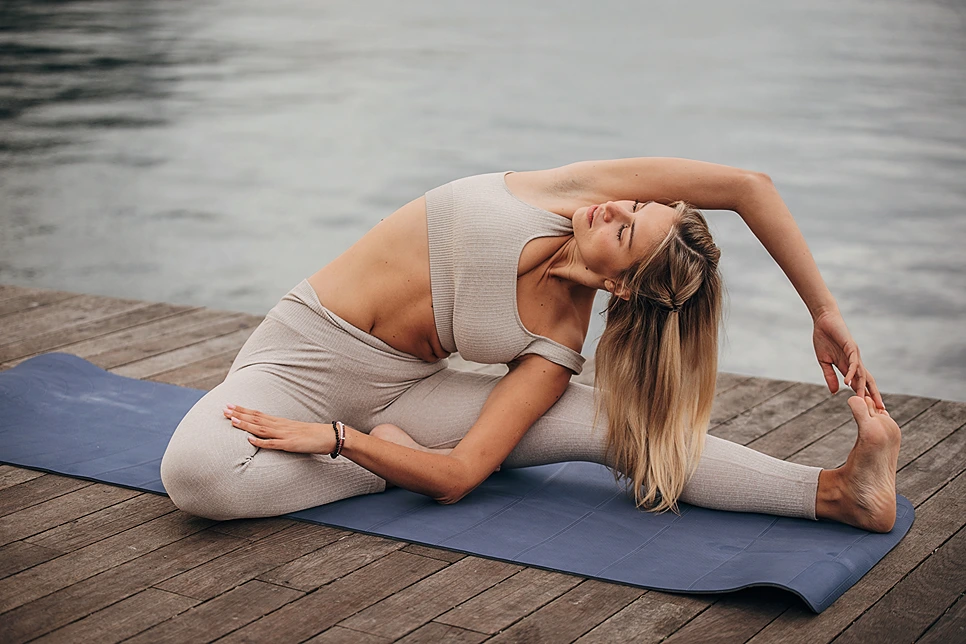
Back and neck pain can arise from injuries, muscle strains, arthritis, osteoporosis, and other medical conditions. But for many, the primary culprit is poor posture and misuse of the body.
When we slouch at a desk, gaze down at phones, or sit for extended periods, we strain the delicate muscles and joints of the back and neck. This causes fatigue, pain, and loss of alignment. Temporary relief treats the symptoms but ignores the root problem.
Yoga helps by building strength, improving alignment, and encouraging mindful movement. With expert guidance, you can begin retraining your body to move properly and prevent future pain.
Yoga Basics for Pain Relief
Yoga is more than just stretching. It incorporates body awareness, breathing control, meditation, and proper alignment. This comprehensive approach is what makes yoga so effective for relieving back and neck discomfort.
In yoga classes for pain management, poses are practiced slowly and gently, with props like blocks or straps used to assist in proper form.
Attention is paid to alignment in areas like the neck, lower back, shoulders, and hips. Breathwork helps students tune into physical sensations mindfully without tensing up.
With regular practice, students enhance flexibility, build core strength, and develop body awareness. This prevents overstretching and allows students to detect and correct poor postural habits. Yoga gives students the tools to manage their pain and sustain improved mobility long-term.
Which Yoga Poses Alleviate Back and Neck Pain?
Certain yoga poses are particularly beneficial for reducing back and neck discomfort:
| Pose | Benefits & Instructions | Recommended Duration |
| Cat-Cow Pose | Mobilizes the spine, alleviating tension. Alternate between rounding the back and stretching the belly. | 5-8 rounds |
| Child’s Pose (Balasana) | Gently stretches lower back, hips, thighs; relaxes back muscles. Lower torso between thighs, stretch arms forward. | 1-2 minutes |
| Cobra Pose (Bhujangasana) | Strengthens back, opens chest and shoulders. Lie on belly, gently lift upper body with arms straight. | 20-30 seconds |
| Standing Forward Bend | Lengthens spine, decompresses back. Bend from hips, hang arms loosely, bend knees to modify. | 1-2 minutes |
| Supine Spinal Twist | Stretches back muscles, realigns spine. Lie on back, extend arms, gently twist torso using core strength. | 30-60 seconds each side |
| Savasana | Promotes relaxation, releases tension. Rest on back, release all effort and tension. | 5 minutes |
| Warrior II (Virabhadrasana II) | Strengthens and stretches neck, shoulders, and back. Stand with feet apart, extend arms, bend front knee. | 20-30 seconds |
| Boat Pose (Navasana) | Strengthens core, alleviates lower back tension. Sit, lift legs, balance on sit bones, extend arms. | 20-30 seconds |
| Wheel Pose (Cakrasana) | Opens chest and shoulders, strengthens back. Lie on your back, bend knees, place hands beside head, lift body. | 20-30 seconds |
| Downward-Facing Dog | Stretches hamstrings, decompresses spine. Invert the body, pressing hands and feet into the mat, lifting hips. | 1-2 minutes |
When performing poses, listen to your body and avoid overstretching. Props like yoga blocks and straps can provide extra support. A qualified instructor can help determine modifications suitable for your needs.
How Can You Customize Your Yoga Practice for Pain Relief?
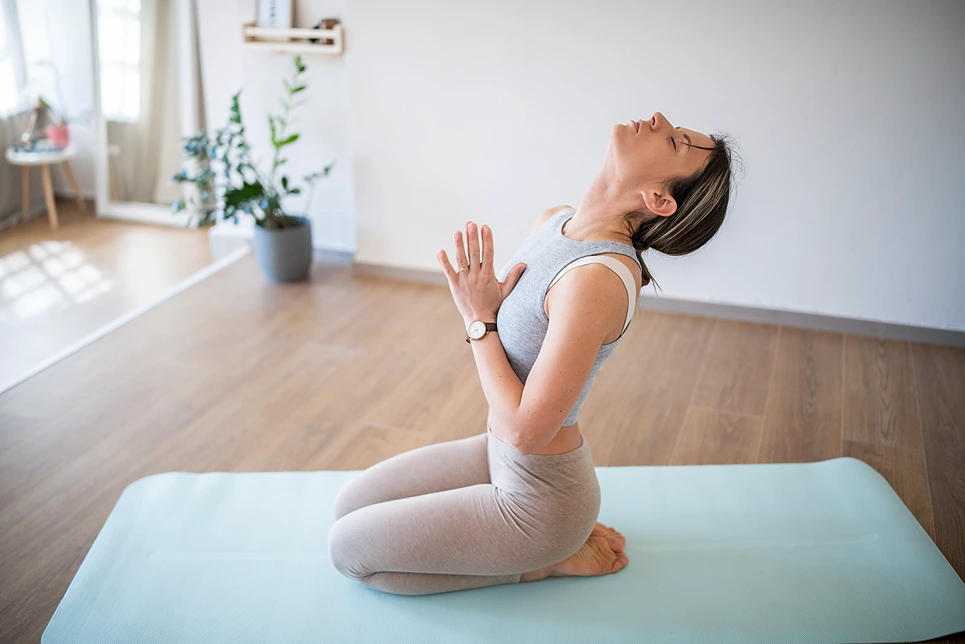
Since everybody is different, yoga should be customized to suit your comfort level. Those who are new to yoga or experiencing intense pain may need to:
- Use props like blocks and straps for extra support in poses
- Modify poses to be gentle and supported, avoiding deep backbends
- Practice poses that provide traction like Child’s Pose to decompress the spine
- Focus on breathing and meditation rather than perfection in poses
- Shorten practice time and include more resting poses
As your condition improves, you can gradually increase your range of motion. But never force your body into advanced poses or intense stretches. A pain-free yoga practice may not look like what you expect, and that’s okay.
What Is a Good Daily Yoga Routine for Pain Relief?
Not sure where to start? Here is a simple 15-minute sequence to start and end your day with ease:
- Child’s Pose (1-2 minutes): Rest hips on heels, lowering torso between thighs. Stretch arms forward. Relax head and neck.
- Cat-Cow (5-8 rounds): On hands and knees, drop belly toward mat, then arch back and lift head to stretch spine.
- Downward-Facing Dog (1-2 minutes): Invert the body to stretch hamstrings and decompress spine.
- Standing Forward Bend (1-2 minutes): With knees bent, hang arms and bend from hips to release back.
- Supine Spinal Twist (30-60 seconds each side): Lying on back, extend arms and gently twist torso using core strength.
- Savasana (5 minutes): Close with stillness, resting on the back. Release all effort and tension.
Listen to your body and adapt poses as needed. Even 10 minutes of gentle, mindful movement can make a difference over time.
How Can Kaly Help with Back and Neck Pain?
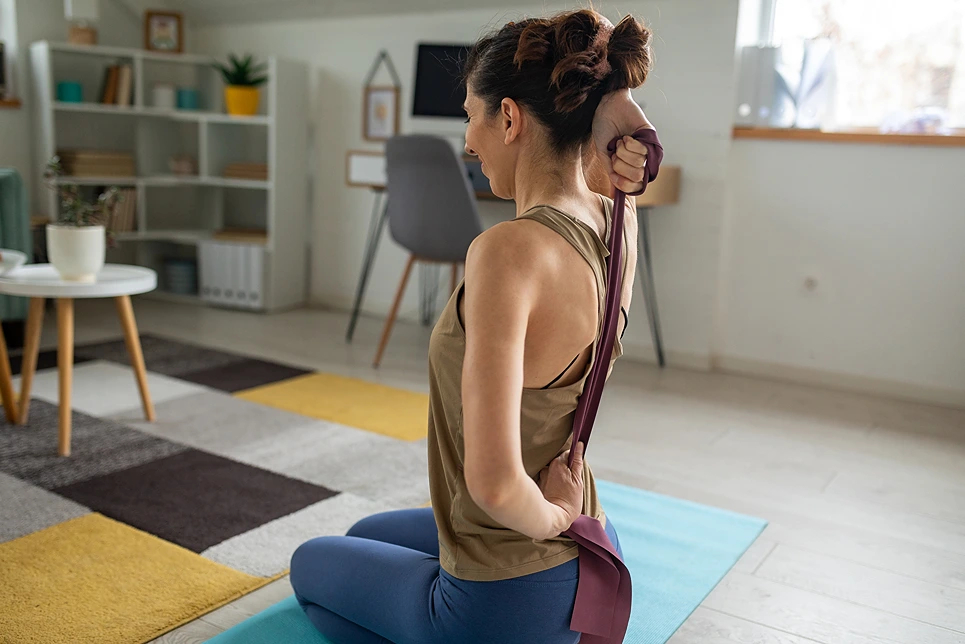
Kaly makes it easy to find physical therapists experienced in managing back and neck discomfort. Our providers create customized treatment plans that incorporate the benefits of therapeutic yoga into your care.
With Kaly, you can:
- Get matched with providers skilled in helping people with chronic pain
- Have remote consultations to identify your needs and goals
- Receive personalized exercise and yoga routines tailored to your abilities
- Access progress tracking tools and instructional video content
- Message your care team anytime with questions or concerns
Our holistic platform ensures you get the right support for effective, long-lasting pain relief.
Essential Safety Tips and Precautions
While gentle yoga can aid healing for many conditions, it’s important to keep these precautions in mind:
- Consult your doctor before starting yoga, especially if you have injuries, osteoporosis, or an underlying condition
- Avoid poses that cause sharp pain or numbness
- Listen to your body and don’t push past your limits
- Build up slowly and focus on alignment versus stretching deeply
- Consider private lessons to learn modifications specific to your needs
Pain is the body’s warning sign to pull back. By tuning into your body’s signals and moving mindfully, yoga can be safely incorporated into your care plan.
Find Relief On Your Healing Journey
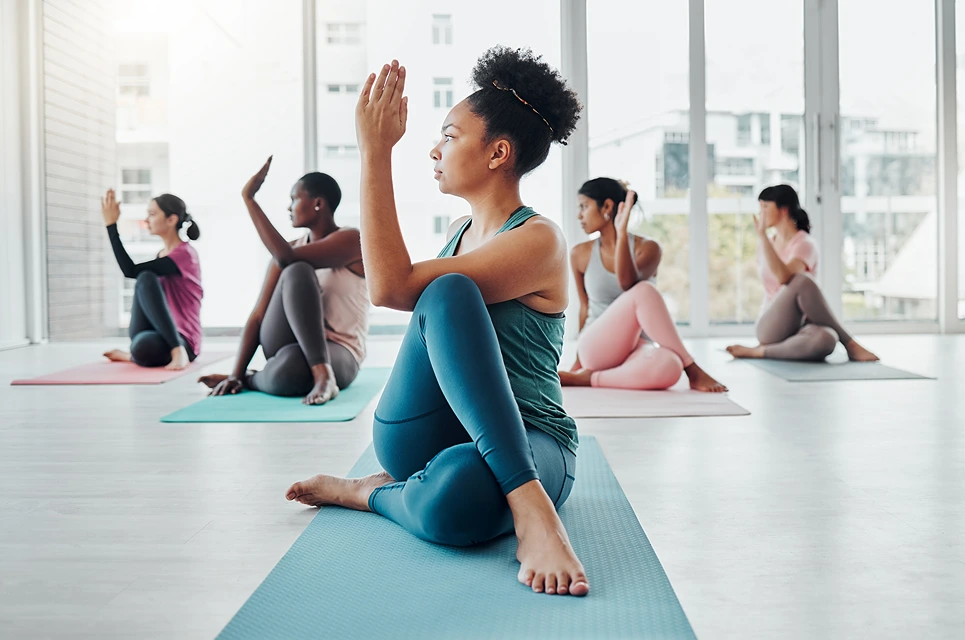
Living with chronic back and neck discomfort can seem unrelenting, but incorporating therapeutic yoga offers hope for reducing pain and improving mobility. Be patient with your body and keep trying new options until you find what works for you.
With expert guidance and consistent practice, yoga can help you regain strength, alignment, and vitality. Focus on incremental progress, not perfection. Over time, you may find your pain decreasing and your quality of life improving immensely.
At Kaly, we’re here to support you each step of the way. Our network of compassionate providers will partner with you to explore integrated care plans that reduce pain and empower you to live actively. You deserve to feel your best. Together, we’ll find ways to make that achievable.
Yoga for Neck and Back Pain: Key Questions and Answers
Can specific yoga poses help alleviate chronic neck pain?
Yes, certain yoga poses are particularly effective for chronic neck pain. Poses like the Cat-Cow and gentle neck stretches can relieve tension. Regular practice under the guidance of a yoga instructor can lead to significant improvement.
How does yoga practice contribute to back and neck pain relief?
Regular yoga practice enhances flexibility and strengthens the upper body, which is crucial for alleviating back and neck pain. It also promotes body awareness, helping to identify and correct postures that may contribute to pain.
What role does a physical therapist play in incorporating yoga for back pain?
A physical therapist can tailor yoga exercises to your specific needs, especially if you’re dealing with chronic pain. They can ensure that each pose is done correctly and safely, maximizing the health benefits of yoga.
Is it beneficial to maintain a seated position with feet flat during yoga for back pain?
Maintaining a seated position with feet flat can be beneficial, especially in poses that require a stable base. This position can help in achieving better spinal alignment and reducing strain on the back.
Should I consult a yoga teacher if I experience shoulder pain during yoga practice?
Absolutely. If you experience shoulder pain or any discomfort during your yoga practice, it’s important to consult a yoga teacher. They can advise on modifications to ensure your safety and help prevent further injury.
Level up your yoga routine to combat back and neck pain. Kaly connects you with skilled therapists for personalized care.
